Dating back as far as 14,000 years, these bodies were placed atop enormous fires that slowly smoke-dried them, leaving them deeply blackened yet frozen in time.
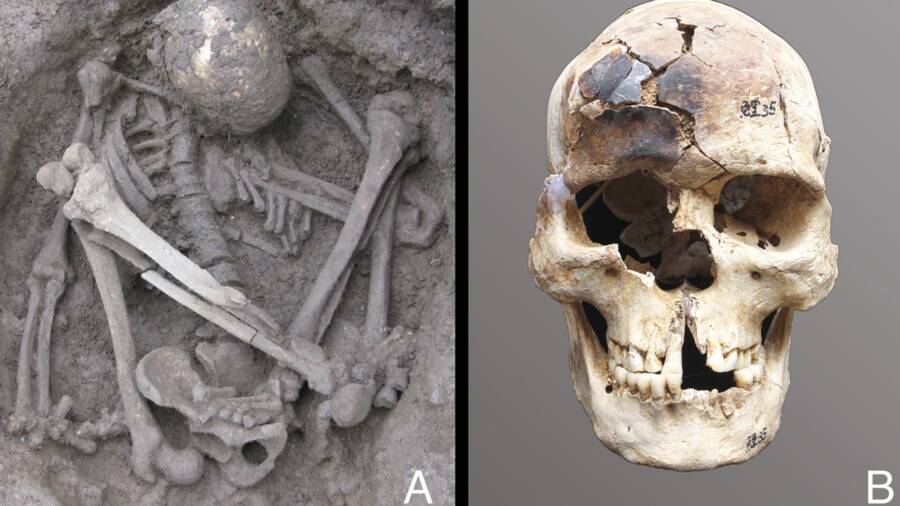
Proceedings of the National Academy of SciencesAn example of one of the newly-studied smoke-dried mummies, this one found in Guangxi, China.
Preserving human remains is a practice that dates back to the prehistoric era and has been well documented in diverse societies around the world. However, a new study suggests that mummifying the dead may have started much earlier than experts once thought.
After studying prehistoric human remains across southeast Asia, scholars have determined that some of the dead were mummified by being smoke-dried over a fire. These remains range from 4,000 to 14,000 years old, making the oldest of them even older than the mummies found in Egypt or Peru — and thus the oldest-known mummies ever documented.
The Prehistoric Smoke-Dried Bodies Of Southeast Asia: The Oldest Mummies In The World?
As detailed in a new study published in the Proceedings of the National Academy of Sciences, researchers made their discovery by analyzing prehistoric human remains in China and Vietnam, as well as in the Philippines, Laos, Thailand, Malaysia, and Indonesia. Between 2017 and 2025, they studied 54 burials that had previously been found at 11 archaeological sites.
Many of these human remains were found in “tightly crouched, or squatting burial postures,” according to the researchers, and many remains had signs of being burned as a method of preservation.
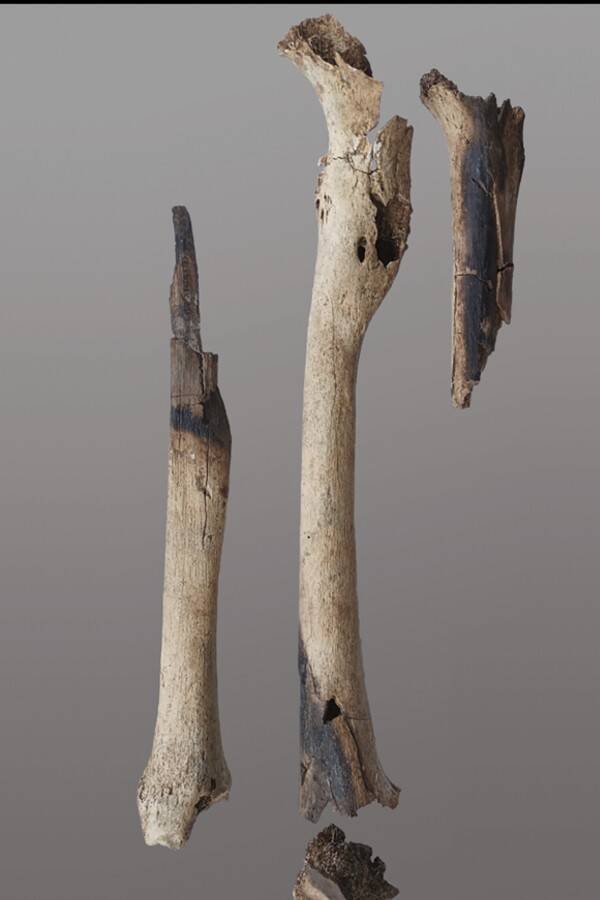
Proceedings of the National Academy of SciencesDuring their study, researchers determined that many prehistoric remains found in southeast Asia showed signs of being burned.
By studying the remains, the researchers determined that that bodies had been “subjected to long periods of smoke-drying and resulting mummification before burial.”
“In some ways we expected the results, but in other ways they were truly astonishing,” Dr. Hsiao-chun Hung, the lead author of the study, told All That’s Interesting. “[W]hen the lab results confirmed it, we were still taken aback — because these skeletons are so ancient. The discovery made us reflect on the spiritual world of these early communities, the strength of their family bonds, and the devotion they showed in preserving their loved ones. Ethnographic records suggest that creating a smoked mummy could take up to three months, requiring constant care to maintain the body’s form. The level of skill, patience, and determination behind such a process is truly remarkable — and that is what surprised us most.”
The researchers suspect that prehistoric people smoke-dried mummies in a method that’s similar to the ones used by present-day Indigenous societies in Australia and Papua New Guinea. Specifically, the researchers believe that most of the human remains from the study were “tightly bound immediately after death and suspended above low temperatures and smoky fires for long periods.”
This may have taken place “inside a house or a specifically constructed hut.” Once the smoking process was complete, the smoke-dried mummy was probably then “transferred to a protected residence, rock shelter, or cave.” Eventually, possibly after many years, the remains were buried.
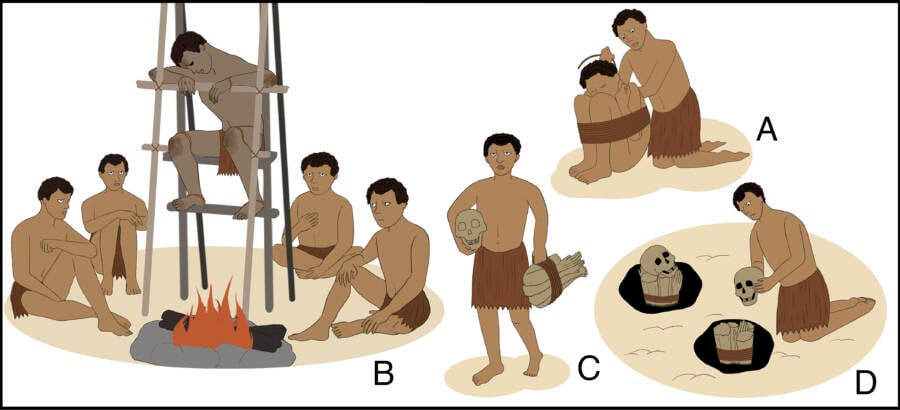
Proceedings of the National Academy of SciencesA figure showing how prehistoric societies might have smoke-dried mummies in order to preserve a loved one’s body.
Given the wide range of mummies that the researchers studied, it seems that “this tradition may have been known among hunter-gatherer societies across a vast region, for many millennia.” Smoke-drying mummies may have taken place from “northeastern Asia and Jomon Japan to western Oceania and Australia, and possibly farther.”
“We suspect this practice began very early,” Hung told All That’s Interesting. “Our study focused on Southeast Asia and southern China, but the evidence points to connections with the first waves of modern humans arriving in Asia from Africa — including the ancestors of today’s Papuan and Indigenous Australian peoples. The tradition likely has very deep roots, spreading widely along their migration routes. It may have originated among early hunter-gatherers long before they settled permanently in Asia.”
But what exactly compelled prehistoric people to mummify their ancestors in the first place?
The Important Role Of Mummification In Human Culture From Prehistory To Today
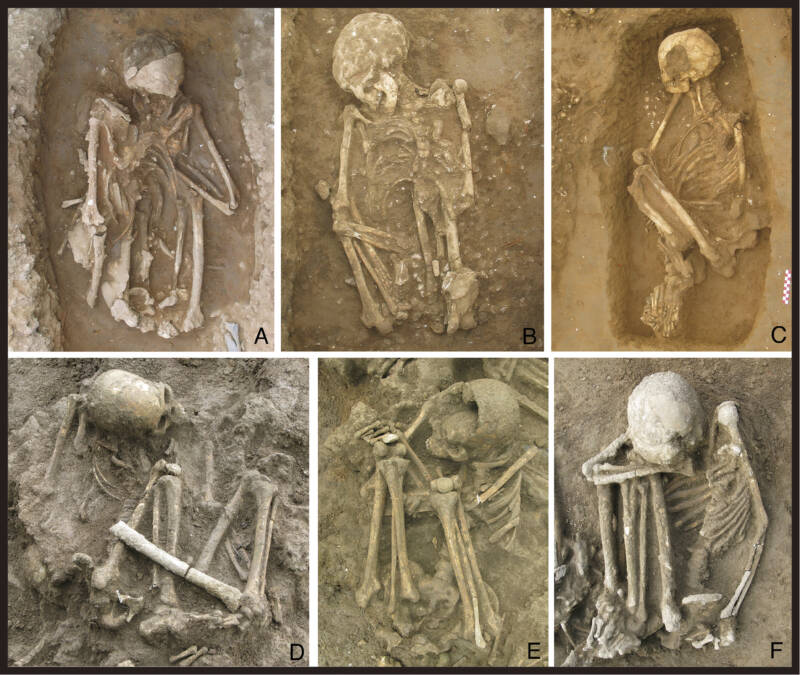
Proceedings of the National Academy of SciencesMany of the bodies studied by the researchers were found in a “flexed” position, suggesting that they had been bound after death and then preserved.
Mummies have been documented across human history. Previously, 7,000-year-old mummies found in Chile were considered the oldest known mummies, but ancient Egyptians also famously mummified their dead, and ancient Europeans were known to preserve their ancestors by storing them in bogs.
According to the researchers who recently studied the smoke-dried mummies of southeast Asia, the ritual of mummification likely came from a desire to maintain a connection with the dead.
“We may never know the exact reason for a practice that began more than 10,000 years ago, but there are some possibilities,” Hung remarked to All That’s Interesting. “First, it reflects a universal human longing for eternity — the hope that the body would not simply vanish with death but remain close to loved ones forever. Another possibility is practical: these ancient communities were hunter-gatherers who moved seasonally. A crouched smoked mummy could be carried along like a family member, allowing the dead to remain part of the living community during their migrations.”
What’s more, some cultures believed that preserving a body would allow their spirit to roam free during the day, and return to its body at night.
And some cultures even still smoke-dry bodies to this day. Indigenous communities in Australia and Papua New Guinea smoke-dry and mummify their dead, suggesting that the prehistoric ritual has endured.
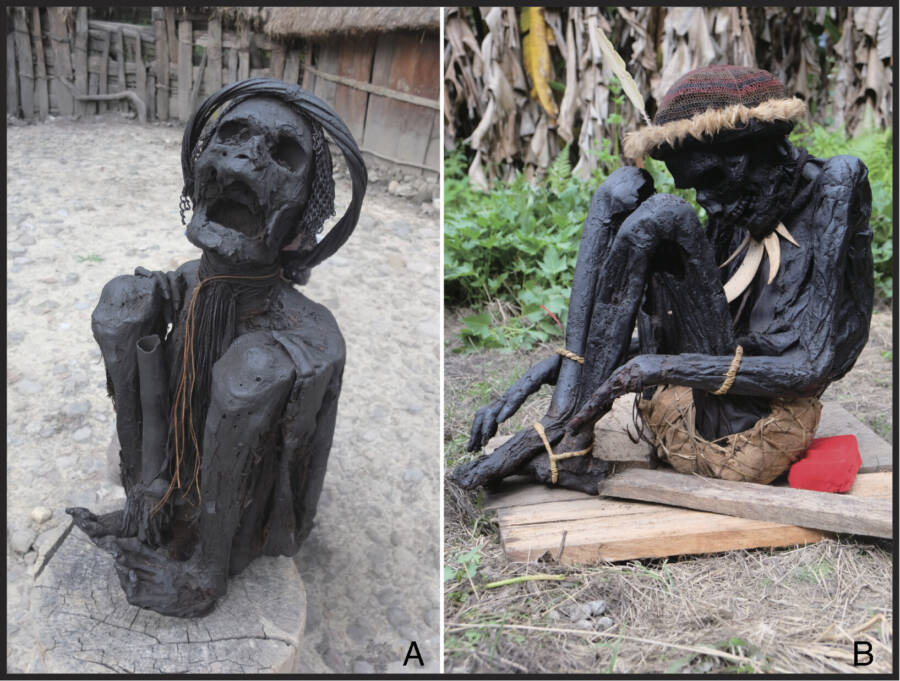
Proceedings of the National Academy of SciencesAn example of a present-day smoke-dried body, these from Papua, Indonesia.
Clearly, the desire to maintain a connection to our loved ones is a prehistoric one. Even more than 10,000 years ago, humans sought a way to preserve their ancestors’ memory long after death, just as we do now.
After reading about the smoke-dried mummies found in Asia, which may be the oldest mummies ever documented, discover the stories behind some of the most fascinating mummies found around the world. Then, learn about the Guanajuato mummies, Mexico’s infamous “screaming” mummies.





